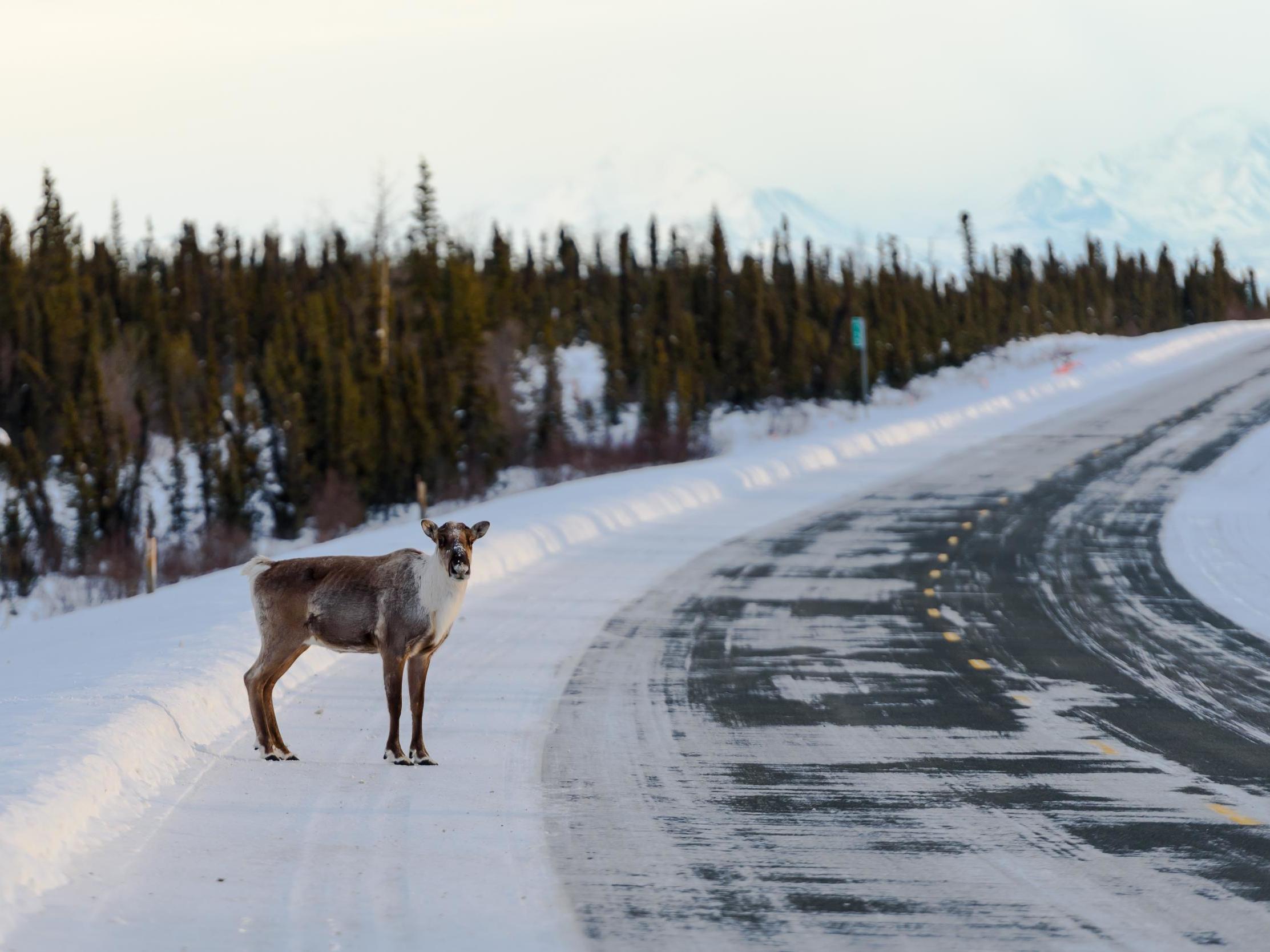Last surviving American reindeer hoped to breed after being added to Canadian herd
The remaining member of a breed considered extinct thanks to human interference is captured and moved

The last member of an American wild reindeer population has been moved to a new wilderness with other caribou in the hope of increasing numbers.
American reindeer are now considered extinct right across the “lower 48” US states – the area comprising most states but excluding Alaska.
The survivor was captured three months ago and held in a special pen, where she was introduced to four Canadian caribou from endangered herds in the hope they would bond.
The capture marked an end for the only herd that occasionally crossed from Canada to the lower 48 states.
Now the group have been released in British Colombia, north of the US-Canadian border, and have met up with another herd.
Wildlife chiefs say the populations are closely enough related that the surviving female will have a better chance of survival than if she were left alone.
“Gray ghosts” in the area of British Colombia, northern Idaho and northeastern Washington have drastically declined. By 2009, the Selkirk herd was estimated to have only about 50 members.
Climate change and human activity – such as hunting, logging, the building of roads and power lines, oil exploration and mining – have destroyed their habitats and allowed more predators than ever to move in.
Last year three caribou from the southern Selkirk herd – all of which wore radio collars – were known of; but scientists finally concluded the other two had died.
Darcy Peel, of a caribou recovery project with the British Colombian government, told The Independent the hope was that the female would continue to integrate with the others and eventually breed.
“There was no opportunity for her to contribute to the genetic diversity before,” he said. “But at least this way provides an opportunity for the remaining ones to contribute to efforts in British Colombia to boost populations.”
He said the environment and temperatures were similar enough for her to settle in.
The group were released into the wild north of the city of Revelstoke.
“She’s now where she belongs,” said Cory Legebokow, of the caribou recovery project.
Protecting the animals’ former range in the northern US mountains could provide “a fighting chance,” for their return, Andrea Santarsiere, of the Center for Biological Diversity told Columbian.com.
However, the Canadian government faces pressure to allow more logging in caribou habitat.
Join our commenting forum
Join thought-provoking conversations, follow other Independent readers and see their replies
Comments